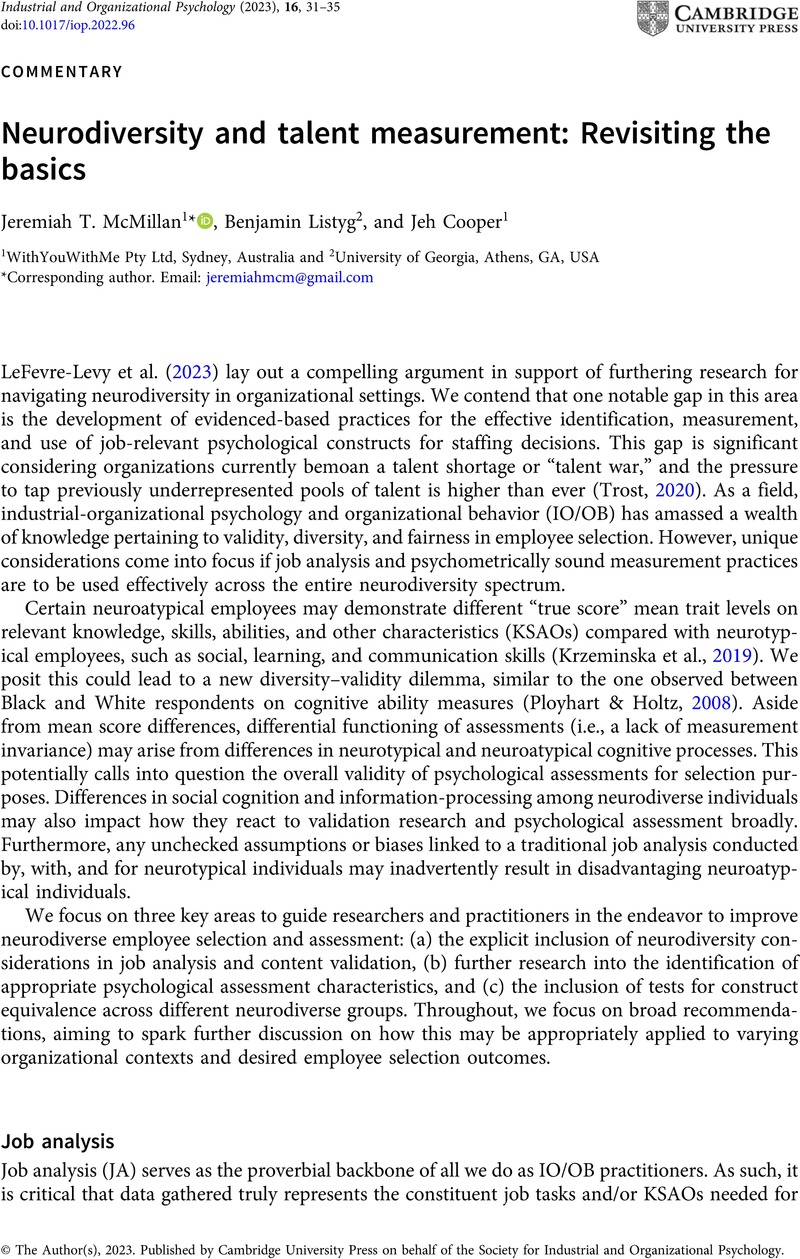Crossref Citations
This article has been cited by the following publications. This list is generated based on data provided by Crossref.
Mahmood, Qurat-ul-Ain
and
Ahmed, Riaz
2025.
Greening sustainability! unraveling the nexus of green human resource management practices, green dynamic capabilities, and employee engagement in the presence of innovative climate.
International Studies of Management & Organization,
p.
1.
Taylor, Mary Anne
and
Wituk, Emma
2025.
Reasonable Accommodation for Neurodiversity: Legal, Organizational and Managerial Considerations.
Employee Responsibilities and Rights Journal,
Allen, Robert A.
Dickmann, Michael
Priscott, Tamsin
and
White, Gareth R. T.
2025.
Exploring positive and negative intersectionality effects: an employment study of neurodiverse UK military veterans.
The International Journal of Human Resource Management,
Vol. 36,
Issue. 5,
p.
733.


